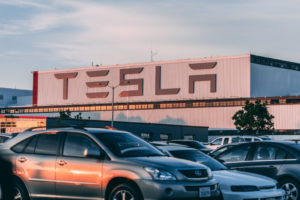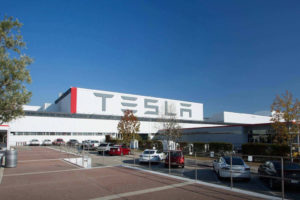Ever wonder if the Tesla factories ever hit the snooze button? Imagine, machines and people working tirelessly around the clock, churning out electric dreams one car at a time.
You’re about to discover the rhythmic heartbeat of Tesla’s production line and what it really takes to keep up with the electric vehicle giant’s innovative pace.
Quick Takeaways:
- Tesla’s production lines aim to run 24/7 with scheduled downtimes for maintenance, reflecting a balance of efficiency and machine health.
- Advanced automation alongside constant process refinements helps meet high demand, ensuring Tesla’s rapid vehicle delivery.
- Continuous operations not only enhance production but also provide rich data for AI training and decision-making, aligning with Tesla’s innovative and sustainable ethos.
Is Tesla’s Production Line Always Rolling?
When you think of Tesla, you might picture sleek electric cars that seem to just whizz off the production lines 24/7, but what’s the real deal? Well, Tesla’s production schedule is a marvel of modern manufacturing. While full details are kept as tight as a drum by the company, we do know that Tesla strives to keep their assembly lines humming, aiming for minimal downtime.
So yes, Tesla has indeed geared up to run its production lines seven days a week with multiple shifts. However, it isn’t a relentless, non-stop churn. Like any well-oiled machine, these lines do pause, but mostly for scheduled maintenance, upgrades, or to switch over to new models or features. This ensures everything runs smoothly and safely, which is always top of mind.
How Does Tesla Keep Up with High Demand?
Tesla’s the name of the game when it comes to scaling up to meet an almost insatiable appetite for electric vehicles. How do they do it? By setting the standard in lean manufacturing and pushing the envelope with cutting-edge automation. Tesla employs an army of advanced robots —from the nimble ‘flufferbot’ to the mighty ‘Giga Press’—which work in concert with skilled human teams. This symphony of man and machine keeps efficiency at a peak and production snags at bay.
But Tesla doesn’t just throw technology at the problem. They also continuously refine their manufacturing processes, creating a feedback loop that constantly improves speed, quality, and cost-efficiency. It’s this relentless pursuit of perfection that helps Tesla deliver record numbers of vehicles, and keeps customers coming back for more.
What Impact Does Around-the-Clock Manufacturing Have?
Ever wonder what running a factory non-stop means for the people and robots on the floor? Well, it’s a juggling act, and not just of schedules. Tesla has to manage employee well-being, machine health, and the sustainability of its practices all at once.
For the workforce, this means creating rotations and shifts that make sense and foster a healthy work-life balance. With robots doing the heavy lifting and precision work, human workers can focus on what they do best—solving complex problems and overseeing quality control.
Operationally, those machines can’t run ragged. Regular maintenance is critical, scheduled during those production breathers to avoid breakdowns. And let’s not forget the big picture; Tesla’s gigafactories are designed with energy efficiency in mind. Their Nevada location, for example, is complemented with a vast solar array, highlighting Tesla’s commitment to sustainable energy even within manufacturing.
But there’s an often overlooked benefit here—data collection. Running almost round-the-clock means more data, and Tesla is all about leveraging this information to make smarter decisions, reduce waste, and improve every aspect of the build process. It’s a significant edge that not only fosters continuous improvement but also serves as a rich training ground for Tesla’s AI systems.
Remember, Tesla’s way isn’t set in stone. They’re always in beta, always iterating. And that dynamism is key to their ability to produce vehicles at an astounding pace while pushing the frontier of what’s possible in automotive manufacturing.
The next time you see a Tesla glide silently by, remember there’s a symphony of innovation and hard work behind the scenes that keeps those wheels turning.
Can You Tour a Tesla Factory?
Ever wondered what goes on within the bustling walls of a Tesla factory? You’re in luck—Tesla often opens its doors to curious visitors who want to catch a glimpse of the future of automotive manufacturing. Historically, Tesla has offered tours at various locations such as their Fremont Factory in California and Gigafactory in Nevada. However, please be aware that availability can vary, especially with the ongoing global situation regarding health and safety.
To book a tour, you’ll typically need to head over to Tesla’s official website and look for the ‘Factory Tours’ section. Remember, spots can be as coveted as the latest Tesla model, so it’s wise to book well in advance. Now, what exactly might you behold on these tours?
Prepare to be wowed by the harmony of robots and humans working together. During a tour, you get a real-time view of Tesla’s state-of-the-art production line. And if you’re especially keen on seeing the seven-day operation in action, plan your visit during the weekdays—you might even have a chance to see the bustling activity as teams work around the clock to meet demand.
Visitors often walk away with a deeper appreciation of Tesla’s commitment to innovation and sustainability. While no two factory tours are ever identical (thanks to continuous improvements and developments at Tesla), it’s an eye-opening experience that’s not to be missed.
Here’s a sneaky tip: keep an eye out for the community-driven forums and social media groups dedicated to Tesla enthusiasts. Sometimes, they have the inside scoop on tour schedules and unique insights that you might not find elsewhere.
What Might Change Tesla’s 7-Day Manufacturing Process?
Tesla’s relentless drive for efficiency and innovation means that their manufacturing processes are constantly under review and improvement, sometimes leading to changes in their seven-day operation rhythm. Here are a few things that could potentially shift the dynamics at Tesla’s factories:
Introducing New Models: When a new Tesla model hits the scene, it’s a whole new ballgame. Tooling and production lines might need to be reconfigured, potentially leading to temporary adjustments in the manufacturing schedule. A perfect example was the ramp-up of the Model 3, which required rethinking certain aspects of Tesla’s production lines.
Manufacturing Technology Advances: Tesla’s not one to rest on its laurels. As advancements in manufacturing tech hit the market, Tesla is usually at the forefront of adopting such innovations. With new tech, there could be periods of retooling that might temporarily interrupt the non-stop production flow.
Market Demand Fluctuations: Let’s face it, Tesla’s manufacturing schedule largely dances to the tune of market demand. If global automotive trends shift or if there’s an economic downturn, Tesla might need to adjust their output accordingly.
Supply Chain Complications: We live in a world where a hiccup on one side of the globe can cause a sneeze on the other. Should Tesla encounter supply chain issues (think shortage of semiconductor chips), there might be a need to recalibrate their production schedule.
Interestingly, another unique factor that could influence Tesla’s seven-day operation is the company’s move into markets with different labor laws and customs. When Tesla builds factories in new countries, they have to adapt to local regulations, which might mean tweaking their seven-day schedule to comply with local labor laws.
In the grand tapestry of Tesla’s operations, expect the only constant to be change. The Tesla of today might not be the Tesla of tomorrow, but one thing’s for sure—their commitment to pushing the envelope is a permanent fixture.
For a truly up-to-date peek into Tesla’s world, check out the Tesla Q4 Earnings Call where Musk and co. often share insights into production schedules and potential changes on the horizon.
Keeping an eye on Tesla’s trajectory, it’s clear that while the core of their manufacturing ethos likely won’t waver, the execution might evolve with time. Stay tuned, and you’re sure to witness an exciting ride.




